I'm trying to use ggplot to draw a graph comparing the absolute values of two variables, and also show the ratio between them. Since the ratio is unitless and the values are not, I can't show them on the same y-axis, so I'd like to stack vertically as two separate graphs with aligned x-axes.
Here's what I've got so far:

library(ggplot2)
library(dplyr)
library(gridExtra)
# Prepare some sample data.
results <- data.frame(index=(1:20))
results$control <- 50 * results$index
results$value <- results$index * 50 + 2.5*results$index^2 - results$index^3 / 8
results$ratio <- results$value / results$control
# Plot absolute values
plot_values <- ggplot(results, aes(x=index)) +
geom_point(aes(y=value, color="value")) +
geom_point(aes(y=control, color="control"))
# Plot ratios between values
plot_ratios <- ggplot(results, aes(x=index, y=ratio)) +
geom_point()
# Arrange the two plots above each other
grid.arrange(plot_values, plot_ratios, ncol=1, nrow=2)
The big problem is that the legend on the right of the first plot makes it a different size. A minor problem is that I'd rather not show the x-axis name and tick marks on the top plot, to avoid clutter and make it clear that they share the same axis.
I've looked at this question and its answers:
Unfortunately, neither answer there works well for me. Faceting doesn't seem a good fit, since I want to have completely different y scales for my two graphs. Manipulating the dimensions returned by ggplot_gtable seems more promising, but I don't know how to get around the fact that the two graphs have a different number of cells. Naively copying that code doesn't seem to change the resulting graph dimensions for my case.
Here's another similar question:
The perils of aligning plots in ggplot
The question itself seems to suggest a good option, but rbind.gtable complains if the tables have different numbers of columns, which is the case here due to the legend. Perhaps there's a way to slot in an extra empty column in the second table? Or a way to suppress the legend in the first graph and then re-add it to the combined graph?




